When Your Horse Has Colic: Essential Steps for Care and Recovery
As someone deeply involved in the world of horses, I understand the profound bond we share with these magnificent creatures. But with this bond comes a responsibility, particularly when it comes to their health and wellbeing. One of the most alarming health issues that can strike our equine companions is colic. This term, familiar yet often dreaded among horse enthusiasts, refers to a range of gastrointestinal conditions in horses that cause abdominal pain. It’s a term that can encompass anything from a mild stomachache to a life-threatening emergency.
The seriousness of colic cannot be overstated. It remains one of the leading causes of premature death in horses, making it a pivotal concern for anyone involved in the care and management of these animals. The complexity of colic arises from its various forms – including gas colic, impaction, and torsion – each presenting unique challenges and requiring specific approaches in treatment.
The key to handling this daunting condition lies in prompt identification and management. Recognizing the signs of colic early can make a significant difference in outcomes. Symptoms might range from subtle behavioral changes to more overt signs like rolling, pawing, or distress. Understanding these signs and knowing when to act is crucial.
In our journey through this blog, we will delve into the intricate world of colic in horses. We’ll explore the types, causes, symptoms, and, importantly, the steps you, as a horse owner, can take when faced with this challenge. It’s not just about managing a crisis; it’s about being equipped with the knowledge to potentially save the life of your beloved horse. Remember, in the world of colic, time is always of the essence.
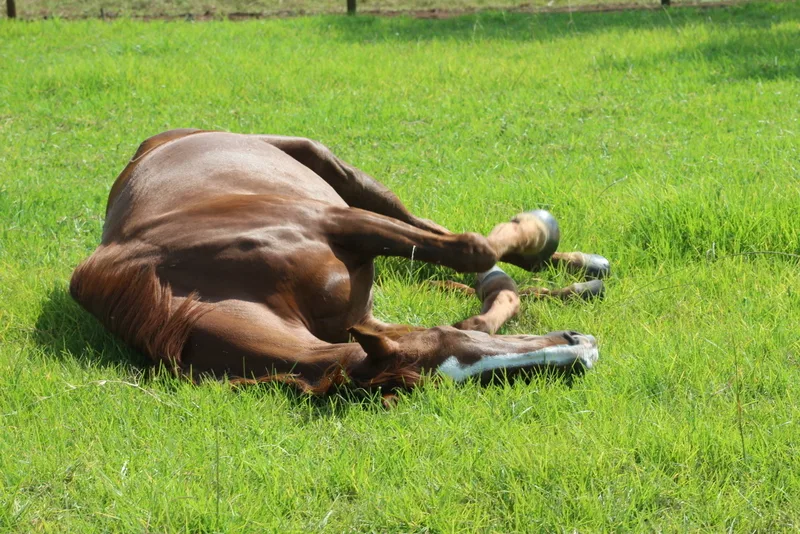
Understanding Colic in Horses
When we talk about colic in horses, it’s important to recognize that we’re referring to a symptom rather than a specific disease. Colic signifies abdominal pain, which can stem from a variety of causes. The complexity of this condition is partly due to the different types of colic, each with its own set of challenges and treatment requirements. Let’s explore the main types:
Gas Colic
Gas colic is one of the most common and generally the least serious form of colic. It occurs when excess gas builds up in the horse’s gastrointestinal tract, causing distension and discomfort. The causes can range from fermentation of certain feeds to abrupt changes in diet. While painful, gas colic is often temporary and can resolve with proper treatment and management.
Impaction Colic
Impaction colic is caused by a blockage in the intestines. This blockage is often a result of feed material that has become dry and hard, creating an obstruction. Factors contributing to impaction colic include poor hydration, lack of exercise, and dietary changes. Impaction colic requires immediate veterinary attention as it can lead to serious complications if left untreated.
Twisted Gut (Volvulus)
Twisted gut, or volvulus, is a severe and life-threatening form of colic. It occurs when a portion of the intestine twists upon itself, cutting off blood flow. This not only causes extreme pain but can also lead to tissue death and necrosis if not promptly addressed. Volvulus is considered an emergency and requires immediate surgical intervention.
Common Causes and Risk Factors
Understanding the common causes and risk factors of colic can help in prevention. These include:
- Dietary Changes: Sudden changes in diet can disrupt the delicate balance of the horse’s gut flora, leading to colic.
- Poor Forage Quality: Low-quality forage can be difficult to digest, increasing the risk of impaction.
- Dehydration: Inadequate water intake can lead to dry, hard feces, predisposing a horse to impaction colic.
- Lack of Exercise: Regular exercise is crucial for maintaining gut motility and preventing colic.
- Parasite Infestation: Parasites can cause irritation and blockages in the intestines.
- Dental Problems: Poor dental health can lead to improper chewing and digestion of feed, increasing colic risk.
In the next sections, we’ll delve deeper into how to recognize the signs of colic and what steps you should take to manage this condition. As horse lovers and caretakers, understanding these aspects of colic is vital for the health and well-being of our equine partners.
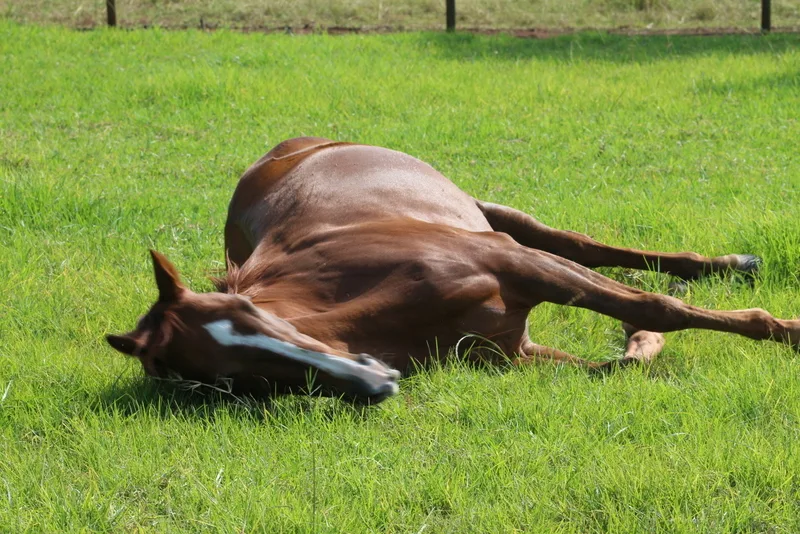
Recognizing the Signs of Colic
Colic can be a stealthy adversary in the equine world. Its signs can be as varied as the horses it affects, making vigilance and an intimate knowledge of your horse’s normal behavior critical. Early recognition not only aids in timely treatment but can also be a deciding factor in the outcome. Let’s look at the key indicators of colic:
Physical Symptoms
Colic symptoms can range from mild to severe. Some common physical signs include:
- Restlessness and Pacing: A horse with colic may seem uneasy, unable to stay still for long.
- Pawing at the Ground: This is often a sign of trying to alleviate discomfort.
- Rolling: Frequent rolling, especially if violent, can be a sign of severe pain.
- Lack of Appetite: A horse turning away from food is always a concern.
- No Bowel Movements: Watch for changes in frequency or consistency of manure.
- Abdominal Distention: A bloated appearance can indicate gas build-up.
- Excessive Sweating: Indicative of pain and distress.
- Increased Heart Rate and Breathing: This can signal severe discomfort.
Behavioral Changes
A behavior change is often the first clue that something is amiss. These can include:
- Irritability or Depression: A horse that’s usually placid but suddenly snaps or seems withdrawn might be in pain.
- Unusual Postures: Standing stretched out or frequently looking at their flank could indicate abdominal pain.
- Reduced Interaction: If your usually sociable horse is ignoring its surroundings, it’s time to pay closer attention.
Variations in Symptoms Between Horses
Just as every horse has a unique personality, the way they manifest pain can also be unique. Some horses may exhibit dramatic symptoms, while others might only show subtle changes. Senior horses, for instance, may not display as obvious signs as younger, more active ones. This variability underscores the importance of knowing your horse’s normal behavior and being able to detect any deviations from it.
Being attuned to these signs is crucial in managing colic. In our next section, we’ll explore the immediate actions you should take upon suspecting colic, a critical step in safeguarding the health and well-being of your equine companion.
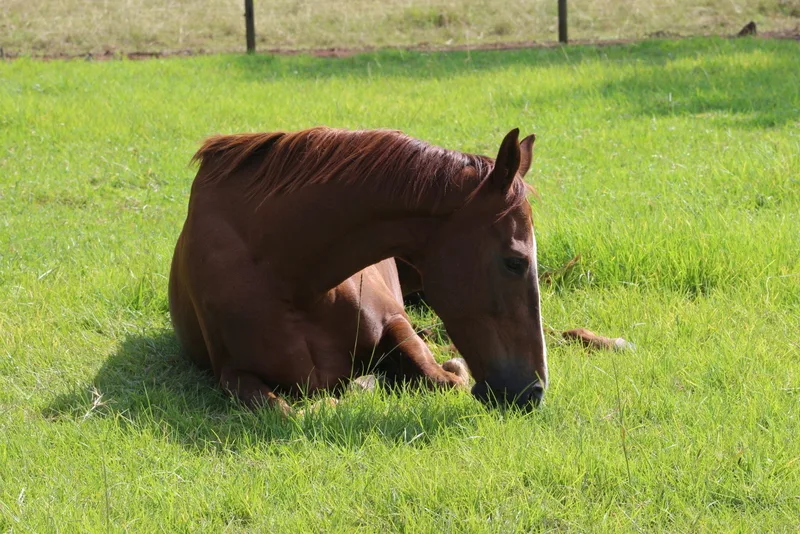
Immediate Actions to Take
When you suspect your horse is experiencing colic, time is of the essence. Prompt and appropriate actions can significantly influence the outcome. Let’s discuss the crucial steps to take:
When to Call the Vet: Understanding the Urgency
Colic is always a potential emergency, and it’s essential to err on the side of caution. If you notice any signs of colic, no matter how mild, it’s time to call your veterinarian. Some indicators that necessitate immediate veterinary attention include:
- Intense abdominal pain.
- Prolonged colic symptoms without improvement.
- Severe rolling or attempts to lie down frequently.
- Elevated heart rate (over 60 beats per minute) or other signs of distress.
Remember, your veterinarian would rather make an unnecessary trip than arrive too late to help.
What You Can Do While Waiting for Veterinary Help
While you’re waiting for your vet to arrive, there are several things you can do to assist your horse:
- Keep Your Horse Calm and Safe: Walk your horse gently if it’s safe to do so and keep them from rolling or injuring themselves. However, do not force a horse in severe pain to walk.
- Remove Feed but Provide Water: Remove any feed to prevent further digestive upset, but allow access to fresh water unless advised otherwise by your vet.
- Monitor Vital Signs: If possible, keep track of your horse’s heart rate, breathing rate, and temperature to provide vital information to your vet upon their arrival.
- Prepare for the Vet’s Arrival: Ensure that the area is safe and accessible for the vet to examine and treat your horse.
The Importance of Not Administering Medication Without Veterinary Advice
It can be tempting to give pain medication to relieve your horse’s discomfort. However, administering any medication, especially painkillers or anti-inflammatory drugs, without veterinary guidance can be dangerous. Certain medications can mask symptoms that are crucial for a correct diagnosis, complicating your horse’s condition and the vet’s ability to treat it effectively.
In this critical moment, your role is to provide comfort and safety for your horse and to gather as much information as possible for the vet. Your prompt action and clear communication are invaluable in helping your vet provide the best care for your horse.
In the next section, we’ll delve into the veterinary diagnosis and treatment process, providing insights into what to expect and how to support your horse through this challenging time.
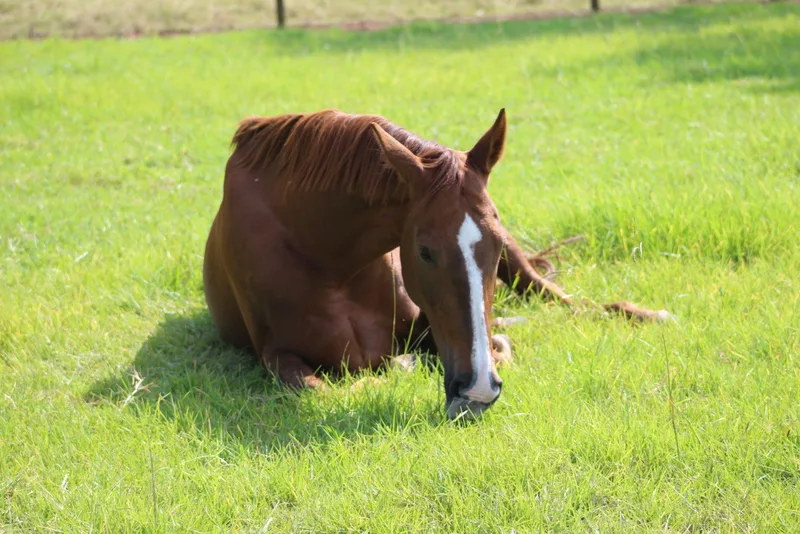
Veterinary Diagnosis and Treatment
When faced with a potential case of colic, a veterinarian’s expertise is invaluable. Their approach to diagnosis and treatment is methodical, aimed at identifying the cause and severity of the colic and determining the most effective course of action. As a horse owner, understanding this process can help you provide the best support for your horse.
How Veterinarians Diagnose Colic
Upon arrival, your vet will conduct a thorough examination to assess the situation. This typically includes:
- Physical Examination: Checking vital signs like heart rate, temperature, and respiratory rate.
- Listening to Gut Sounds: Using a stethoscope to assess intestinal activity, which can indicate the type and severity of colic.
- Rectal Examination: To feel for distension, displacement, or impaction in the intestines (when deemed safe and necessary).
- Nasogastric Intubation: Inserting a tube through the nose into the stomach to relieve pressure and check for reflux, which can indicate a blockage.
- Blood Tests: To check for dehydration, infection, or other underlying issues.
- Abdominal Ultrasound: This can help visualize the intestines and other abdominal structures, aiding in diagnosis.
Possible Treatments: Medical Management vs. Surgical Intervention
The treatment for colic depends on the diagnosis. There are generally two paths:
- Medical Management: Many colic cases can be resolved with medical treatment, which may include fluid therapy (to address dehydration), pain relief medication, and laxatives or motility drugs. This approach is common for gas colic or mild impactions.
- Surgical Intervention: In more severe cases, such as with a twisted gut (volvulus), surgery may be necessary. This is a critical decision often made when medical management isn’t effective or the horse’s life is at immediate risk.
The Role of the Horse Owner During Treatment
As a horse owner, your role is crucial during both the diagnostic and treatment phases. You can assist by:
- Providing Detailed Information: Share your observations about the horse’s behavior, diet, and routine, which can aid in diagnosis.
- Keeping the Horse Calm: Your presence can be comforting to your horse, especially during examinations and treatment.
- Following Veterinary Instructions: This includes administering medications, adjusting diet, and monitoring recovery post-treatment.
- Making Informed Decisions: In critical situations, especially when surgery is recommended, you’ll need to make informed decisions quickly, in consultation with your veterinarian.
Remember, the path to recovery doesn’t end with treatment. Aftercare is a vital component of your horse’s return to health, which we’ll explore in the next section.
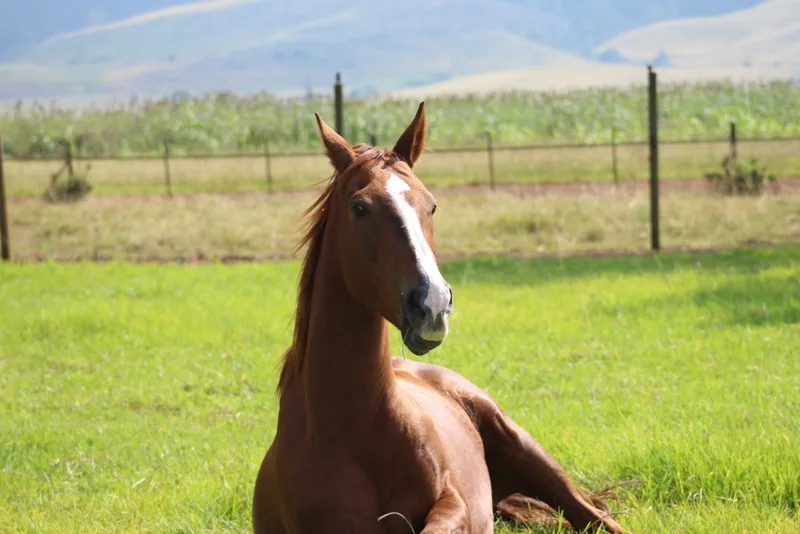
Aftercare and Prevention
Successfully navigating a colic episode is a relief, but the journey doesn’t end there. Post-treatment care and implementing preventative strategies are key to your horse’s long-term health and well-being. Let’s delve into the essential aspects of aftercare and prevention.
Post-Treatment Care for Your Horse
Recovery from colic, especially if it involves surgery, can be a delicate process. Here are some critical steps in post-treatment care:
- Follow Veterinary Guidance: Adhere strictly to any dietary recommendations and medication schedules prescribed by your vet.
- Monitor Recovery Closely: Keep a close eye on your horse’s appetite, bowel movements, and overall behavior. Any changes or concerns should be promptly communicated to your vet.
- Gradual Return to Routine: Slowly reintroduce exercise according to veterinary advice. Avoid rushing this process to prevent complications.
- Wound Care: If surgery is performed, wound care will be a crucial aspect of recovery. Ensure the incision site is clean and monitor for signs of infection.
Long-Term Management and Prevention Strategies
Preventing colic involves a holistic approach to your horse’s care, including:
- Diet and Feeding Practices:
- Consistent Feeding Schedule: Maintain a regular feeding routine to support a healthy digestive system.
- High-Quality Forage: Ensure the bulk of the diet is high-quality forage to encourage proper digestion and gut motility.
- Avoid Sudden Changes: Any changes in feed should be introduced gradually over several days.
- Adequate Water Intake: Always provide access to clean, fresh water to prevent dehydration.
- Regular Exercise and Stress Reduction:
- Consistent Exercise: Regular physical activity is essential for digestive health. Even light exercise can be beneficial.
- Minimize Stress: A calm and stable environment helps in reducing the risk of stress-induced colic.
- Monitoring for Recurrence:
- Regular Health Check-Ups: Routine vet check-ups can help in early identification of potential health issues.
- Be Observant: Stay attuned to your horse’s normal behavior and habits, and be alert to any changes.
Implementing these strategies does not guarantee that a horse will never experience colic again, but they significantly reduce the risk. Regular, proactive management and a keen eye for changes are your best defenses against this complex condition.
In conclusion, while colic can be a daunting challenge, understanding how to recognize it, respond promptly, and provide effective aftercare can make a world of difference. As caretakers of these noble creatures, our dedication to their health and happiness is a journey of constant learning and love.
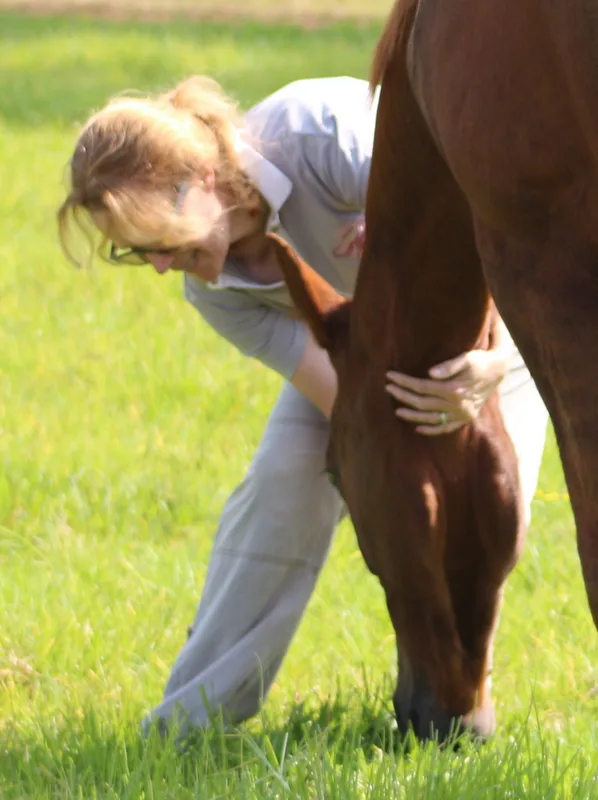
possible Side effects after colic
Colic, especially if severe or recurrent, can have several long-term side effects on a horse’s health. One significant concern, as you mentioned, is laminitis, a serious condition affecting the horse’s feet. Let’s delve into how colic can lead to laminitis and other potential long-term side effects:
Laminitis
Laminitis is a condition in which there is inflammation of the laminae tissues that connect the horse’s hoof to the coffin bone. It can be a secondary complication arising from severe cases of colic. This connection can occur through several mechanisms:
- Endotoxin Release: In severe colic, especially with intestinal compromise, toxins can be released into the horse’s bloodstream. These endotoxins can trigger systemic inflammation, including in the sensitive laminae of the hooves.
- Blood Flow Disruption: Colic, particularly if it involves torsion or displacement of the intestine, can disrupt blood flow in the body. This disruption can lead to decreased blood flow to the hoof and subsequently cause laminitis.
- Stress: The stress of severe pain and illness from colic can also be a contributing factor to the development of laminitis.
Weight Loss and Condition Deterioration
Horses experiencing colic, especially if it’s a prolonged or recurrent issue, may face significant weight loss and a general decline in body condition. This is due to decreased feed intake, absorption issues, and the body’s increased metabolic demands during illness.
Recurrent Gastrointestinal Issues
After a severe colic episode, some horses may become more prone to gastrointestinal disturbances. This susceptibility could be due to changes in gut flora, motility issues, or scar tissue formation following surgery or severe intestinal distress.
Behavioral Changes
Long-term pain or discomfort from colic can lead to changes in a horse’s behavior. This might include increased irritability, reluctance to eat, or a general change in temperament.
Adhesions Post-Surgery
If a horse undergoes surgery for colic, there’s a risk of forming adhesions (scar tissue) within the abdomen. These adhesions can potentially cause discomfort or lead to further colic episodes.
Immune System Compromise
Severe or chronic colic can weaken a horse’s immune system, making them more susceptible to other illnesses or infections.
Preventative and Management Strategies
Given these potential long-term effects, it’s crucial to manage colic promptly and effectively. Preventative measures, like maintaining a consistent and high-quality diet, ensuring adequate hydration, regular exercise, and routine veterinary check-ups, are essential. For horses that have experienced severe colic, a tailored management plan may be necessary to mitigate the risk of these long-term effects.
In cases where complications like laminitis arise, a collaborative approach involving your veterinarian and a farrier will be crucial for effective management and care. As with all aspects of equine health, early detection and proactive management are key to maintaining the long-term health and well-being of your horse.
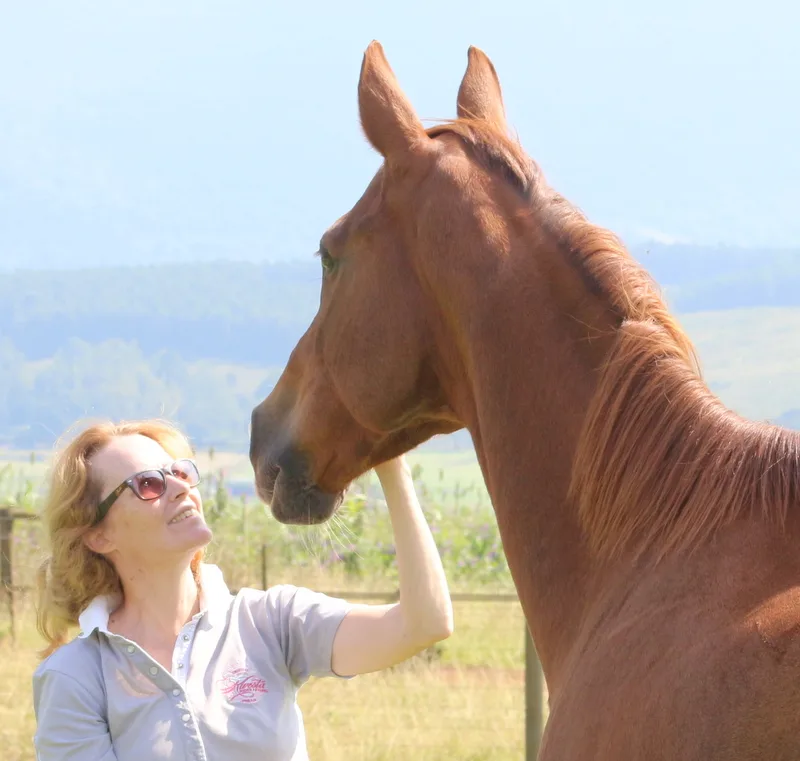
Conclusion
Colic in horses is a complex and often intimidating challenge, but armed with knowledge and preparedness, it’s a challenge we can meet head-on. Through this blog, we’ve navigated the multifaceted aspects of colic, from understanding its types to recognizing the vital signs and taking immediate action. We delved into the critical role of timely veterinary intervention and explored the intricacies of post-treatment care and prevention.
Key Points to Remember:
- Colic refers to a symptom of abdominal pain in horses, with various forms including gas colic, impaction colic, and twisted gut (volvulus).
- Early recognition of colic signs, such as restlessness, pawing, rolling, and changes in eating behavior, is crucial for a positive outcome.
- Immediate action, including contacting your veterinarian at the first suspicion of colic and following their guidance, can be lifesaving.
- Avoid administering any medication without veterinary advice as it can mask symptoms and complicate diagnosis.
- Post-treatment care is as essential as the treatment itself, involving close monitoring, a gradual return to routine, and adherence to veterinary advice.
- Long-term prevention strategies, focusing on consistent feeding practices, adequate hydration, regular exercise, and stress management, are key to reducing the risk of colic.
The importance of being prepared and knowledgeable cannot be overstated. As horse owners and lovers, our ability to respond effectively to colic not only impacts the immediate health of our horses but also their long-term well-being. It’s about creating an environment and lifestyle that nurtures their overall health, reducing the risk of colic and other health issues.
Our journey with horses is filled with joy and challenges, and facing colic is undoubtedly one of the more daunting aspects of this journey. However, with the right knowledge, vigilance, and care, we can ensure that our equine companions live their lives to the fullest, healthy and content. Let this guide be a beacon, helping you navigate through the complexities of colic, ever-prepared to provide the best care for your beloved horse.
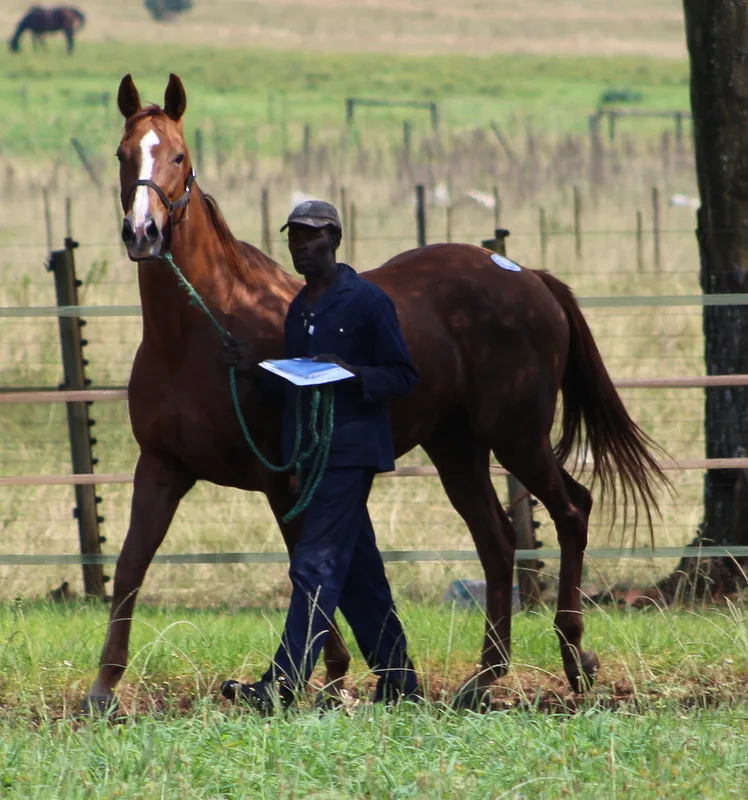
Additional Resources
While this blog offers a comprehensive overview of colic in horses, there’s always more to learn. For further reading and support, consider exploring the following resources:
Recommended Reading:
- The Horse: Your Guide to Equine Health Care
The Horse offers a wealth of information on all things related to horse health, including in-depth articles on colic and its management. - American Association of Equine Practitioners (AAEP)
The AAEP’s website provides valuable resources and guidelines on various equine health topics, including colic. - Equine Research Foundation
Visit the Equine Research Foundation for scientifically-based insights into horse behavior and health, including preventive care for colic.
Online Forums and Support Groups:
- Horse Forums
Websites like Horse Forum and Chronicle of the Horse Forum host vibrant communities where you can share experiences, ask questions, and learn from other horse owners. - Social Media Groups
Platforms like Facebook have numerous groups dedicated to horse care. Search for groups with a focus on equine health or specifically colic management to connect with other horse enthusiasts and experts.
Local Clubs and Organizations:
- Local Riding Clubs and Equestrian Centers
Joining a local riding club or engaging with your nearest equestrian center can provide a network of support and shared knowledge, particularly in dealing with health issues like colic. - Veterinary Clinics and Universities
Keep an eye on workshops or information sessions hosted by veterinary clinics or universities with equine programs. These can be invaluable for gaining firsthand knowledge and advice.
Remember, while online resources and community support are invaluable, they should complement but not replace professional veterinary advice and care. Staying connected with a community that shares your passion for horses can be both comforting and educational, helping you navigate the challenges of equine health, including the complex issue of colic.

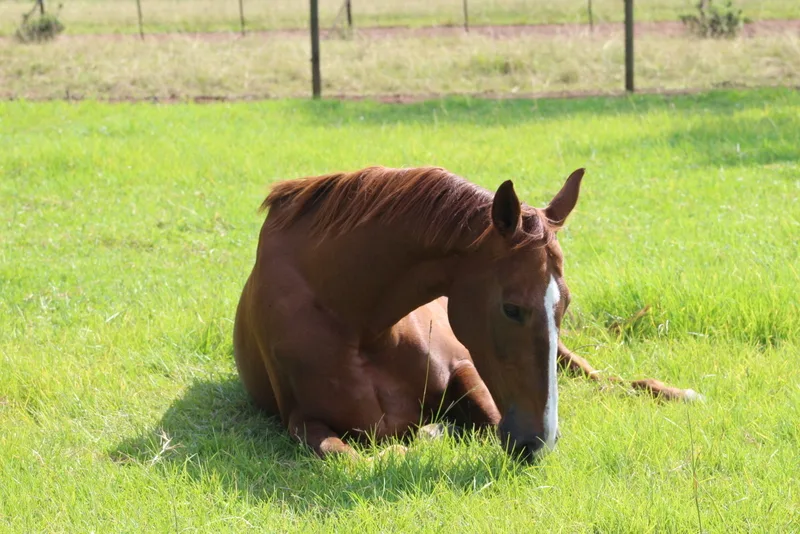
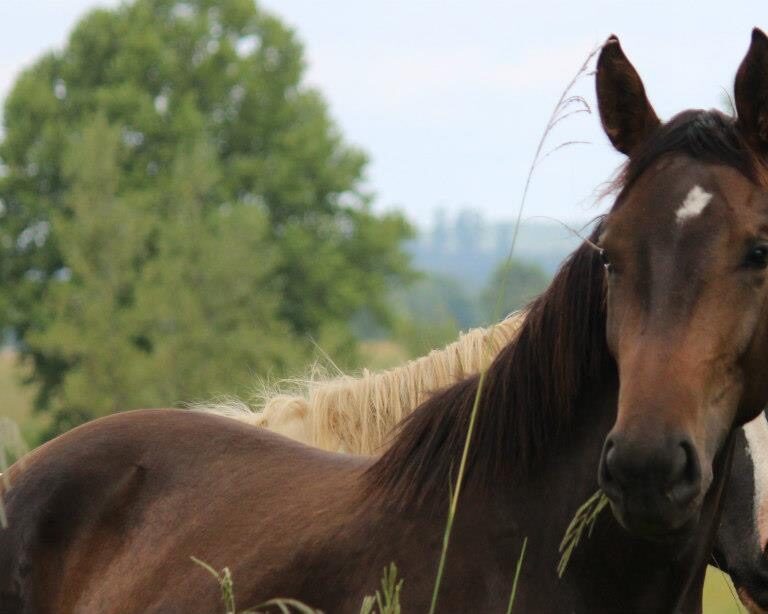


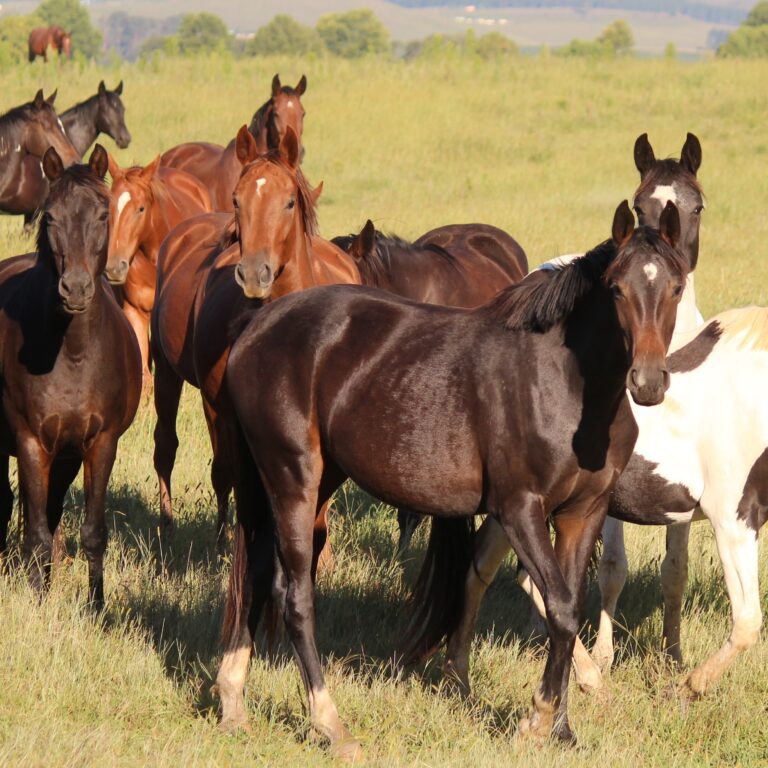
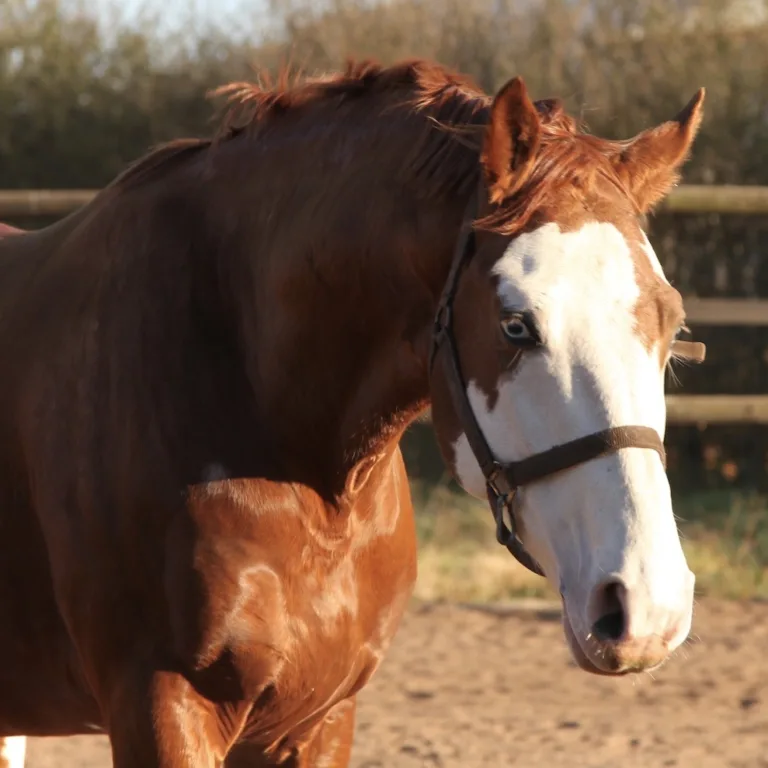
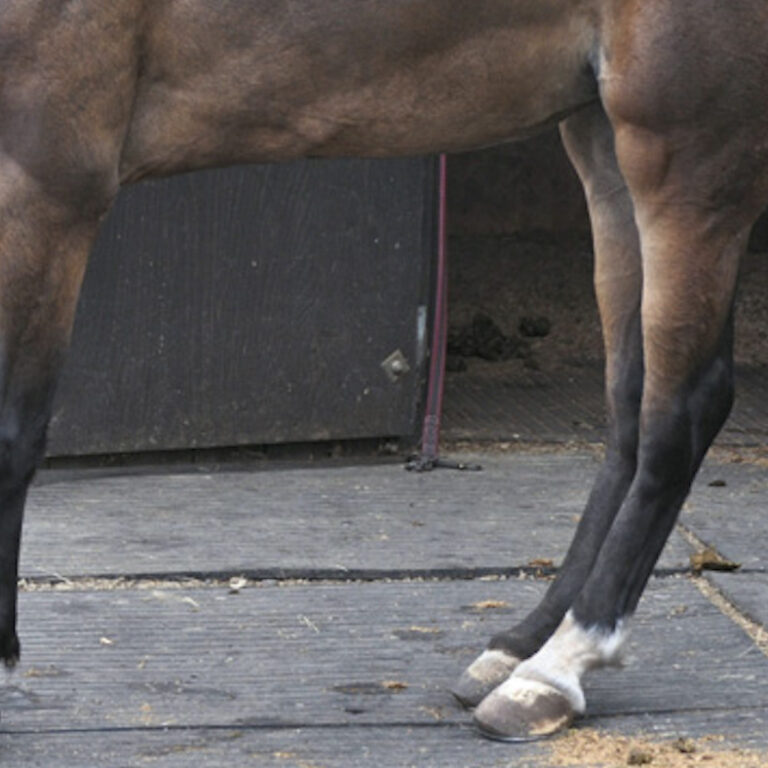
One Comment